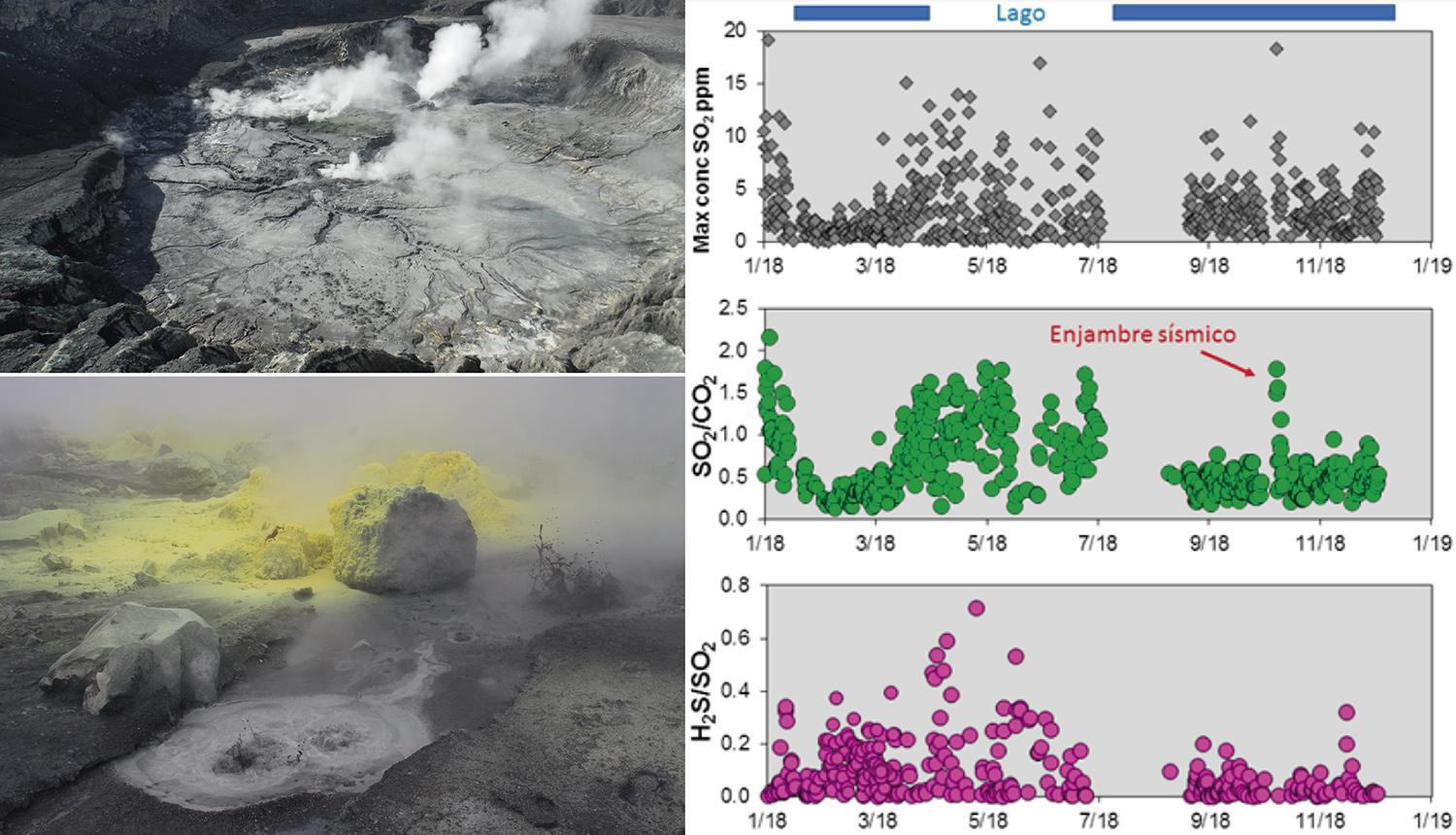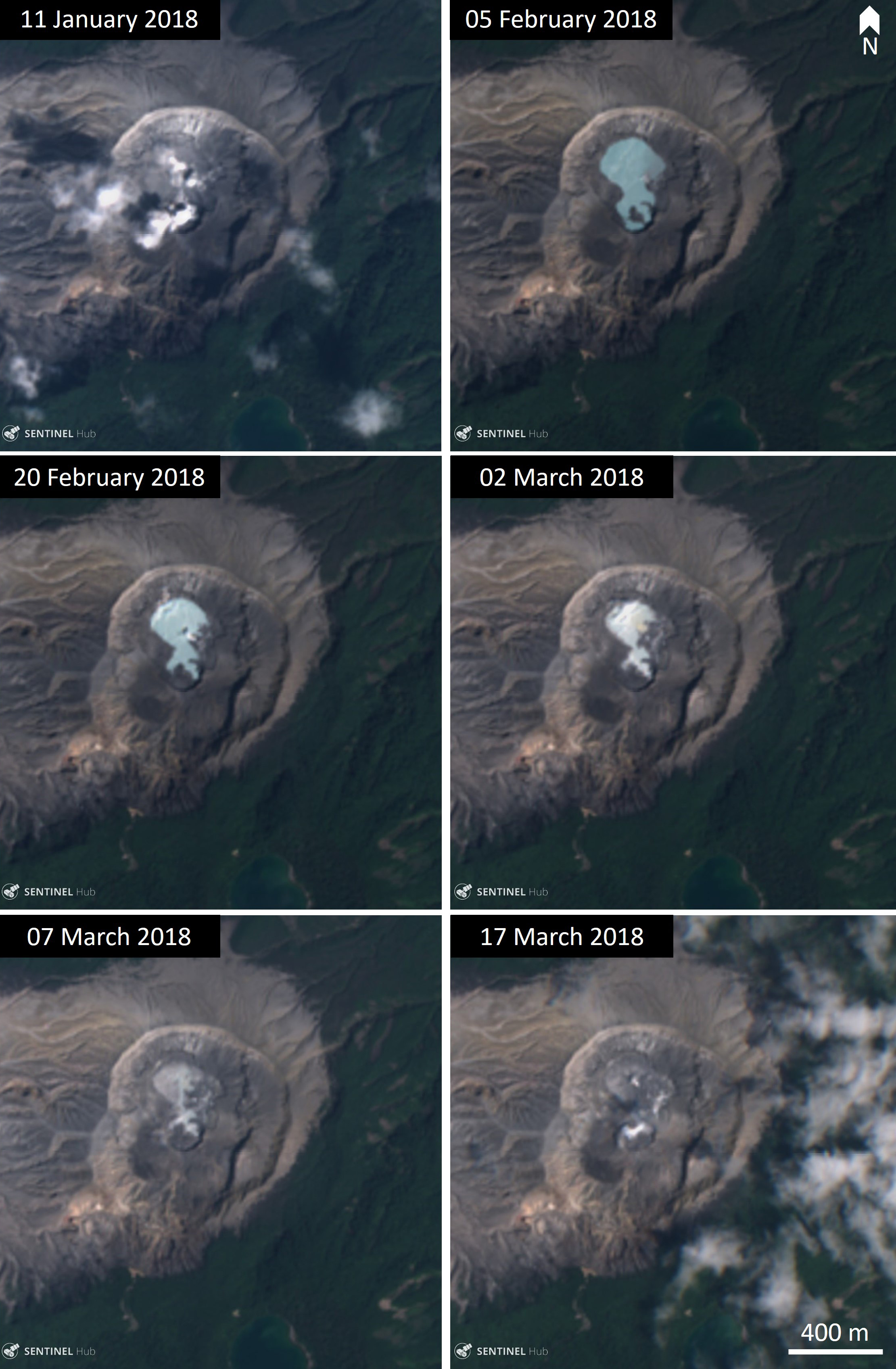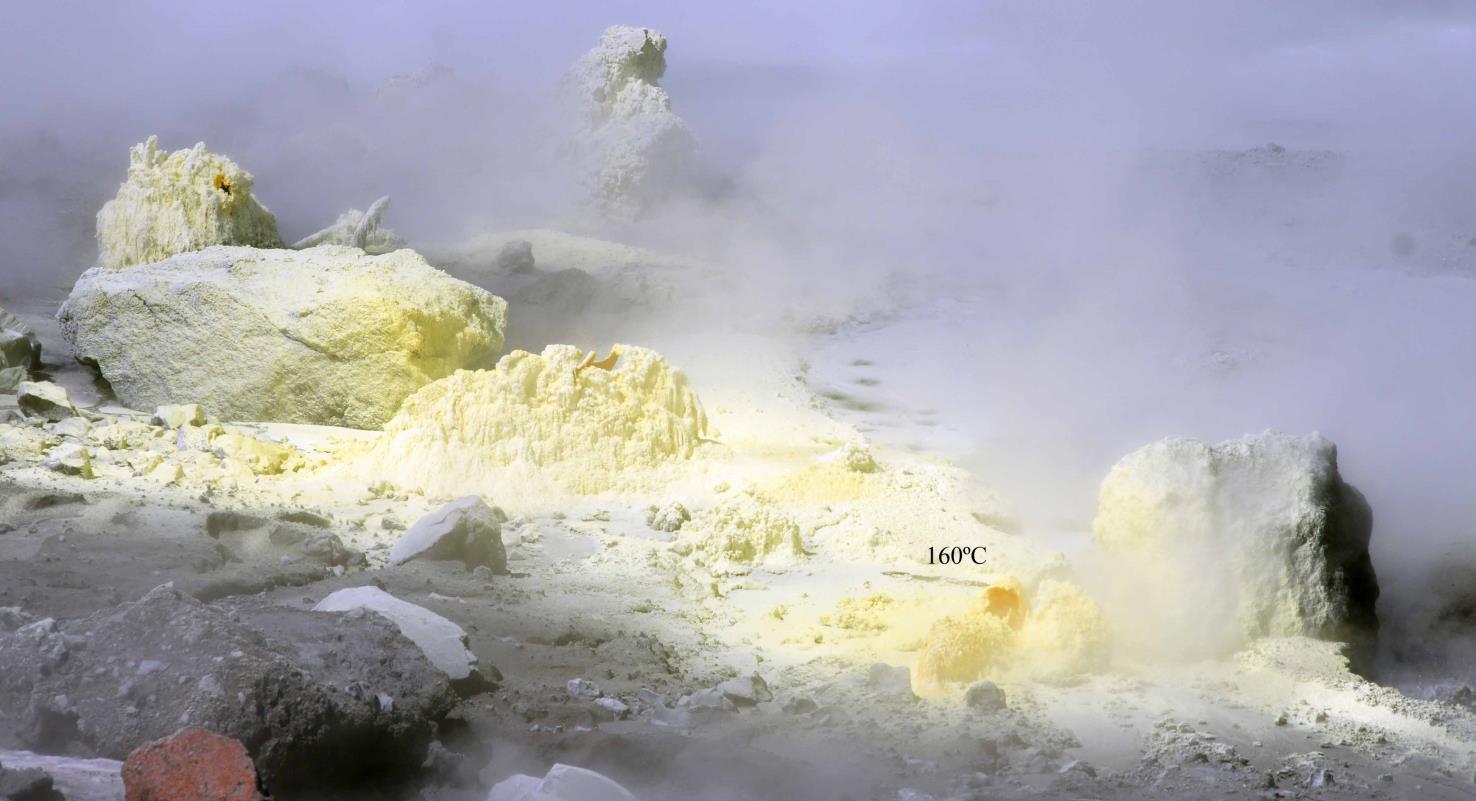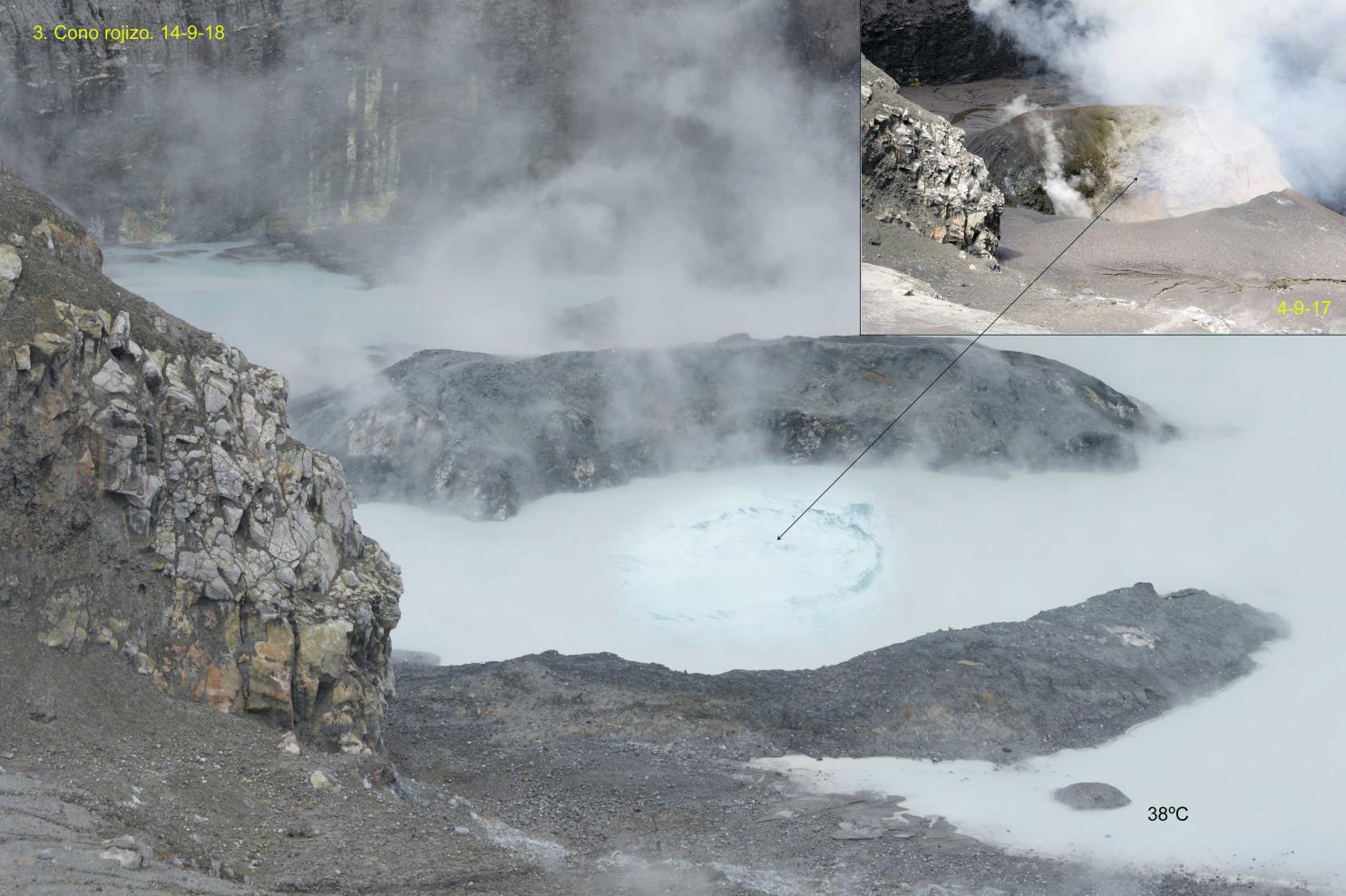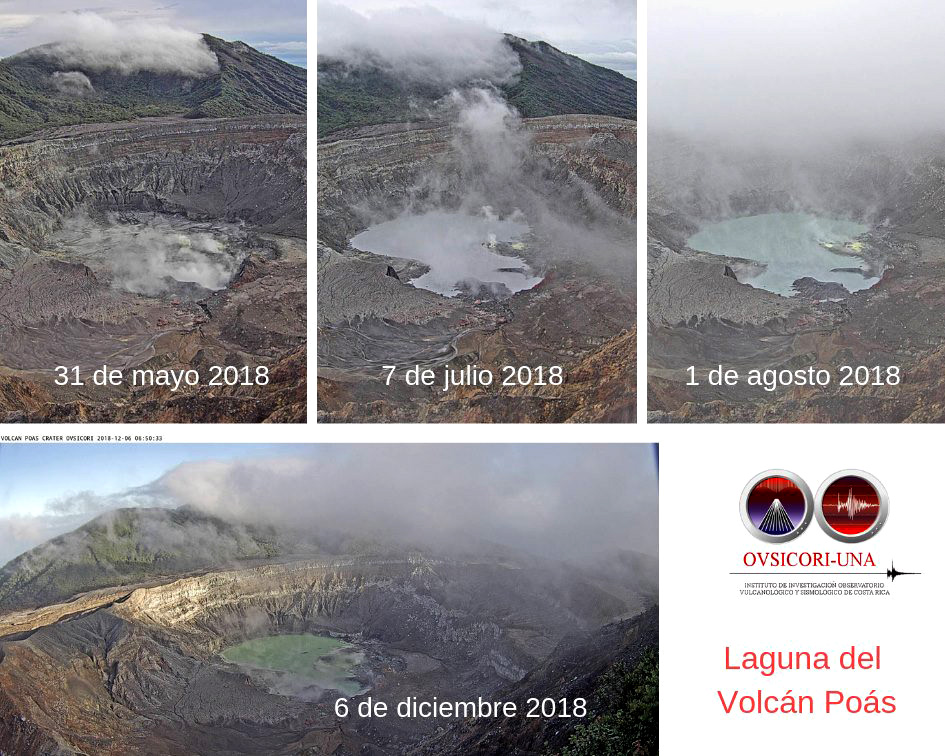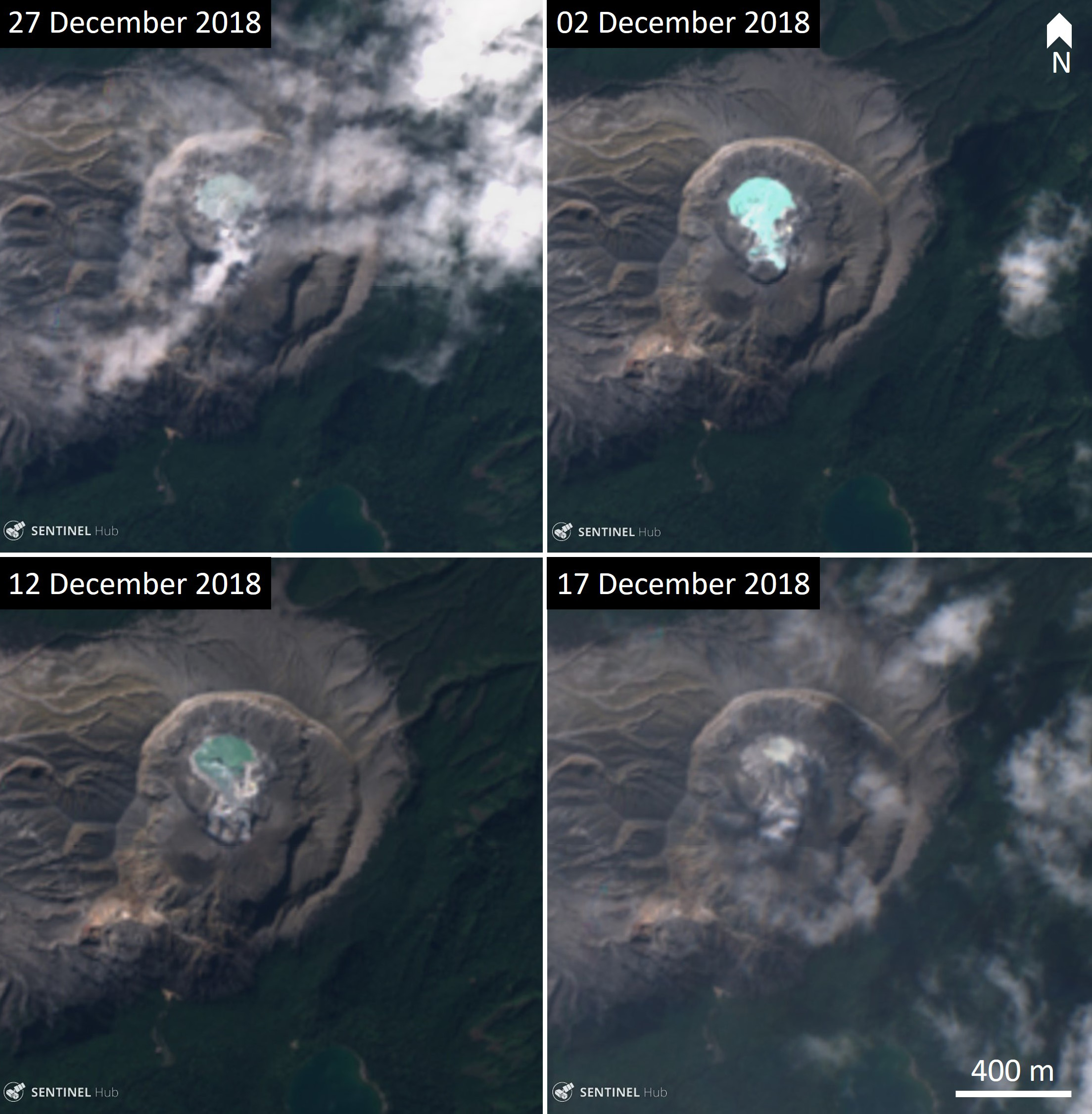Report on Poas (Costa Rica) — January 2019
Bulletin of the Global Volcanism Network, vol. 44, no. 1 (January 2019)
Managing Editor: Edward Venzke.
Edited by Janine B. Krippner.
Poas (Costa Rica) Frequent changes at the crater lake throughout 2018
Please cite this report as:
Global Volcanism Program, 2019. Report on Poas (Costa Rica) (Krippner, J.B., and Venzke, E., eds.). Bulletin of the Global Volcanism Network, 44:1. Smithsonian Institution. https://doi.org/10.5479/si.GVP.BGVN201901-345040
Poas
Costa Rica
10.2°N, 84.233°W; summit elev. 2697 m
All times are local (unless otherwise noted)
After an eruption in April 2017, the hot acidic lake of Poás volcano has been in a state of frequent change, with a fluctuating or absent crater lake and other crater changes. During 2018 low-level activity was dominated by hydrothermal vents and degassing. The crater lake was variable, with changes in water level and complete drying of the lake several times. Seismicity was variable with some periods of increased seismicity, deformation was variable but slight, and gas levels fluctuated through the year (figure 120).
Hydrothermal activity took place during January, with associated low-level gas emissions, and seismicity that reduced later in the month. At the beginning of January the crater lake was absent. After an increase in hydrothermal activity, the lake returned between 18-20 January (figure 121). The lake was measured to be 54°C on 22 January (on the eastern edge) and had a milky blue color with abundant degassing. Temperatures at actively degassing vents reached 97°C. Fumaroles with abundant yellow sulfur deposits were measured to be 160°C (figure 122).
During February, activity remained low with fluctuating levels of CO2, SO2, and seismicity; the level of the lake also fluctuated. Activity remained shallow and related to the hydrothermal system with no magmatic activity. During March the seismicity decreased, coinciding with the disappearance of the crater lake during the March-May dry season. During April there was no change observed at the crater, and gas and seismicity continued to fluctuate within normal levels. Background activity and normal fluctuations continued through May until a phreatic (steam) eruption occurred on 25 May, producing a small gray plume and a larger white steam-and-gas plume (figure 123).
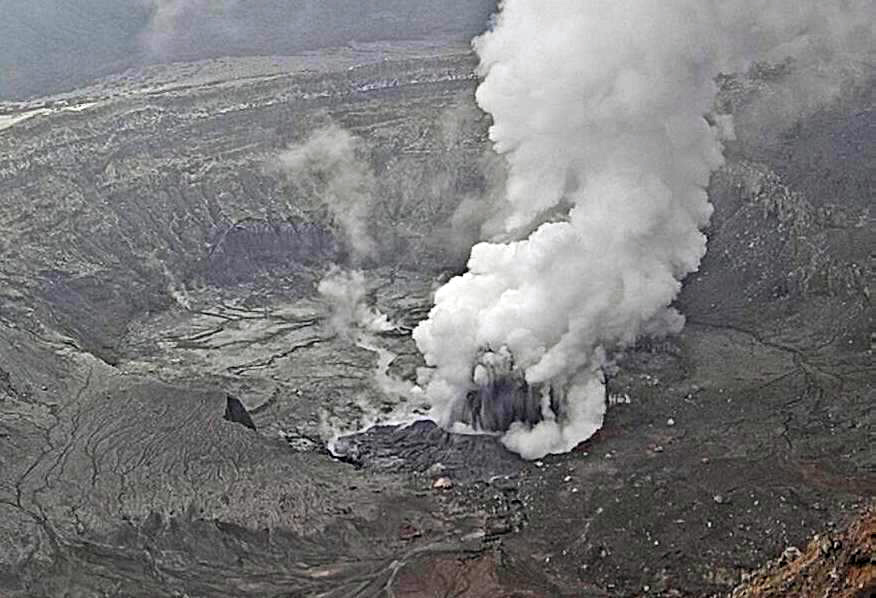 |
Figure 123. A phreatic (steam) explosion on 25 May 2018 at the active Poás crater. Courtesy of OVSICORI-UNA (20 December 2018 report). |
In June there was an increase in activity on the crater floor with increased submarine degassing and an increase in the lake water level. A high flow of SO2 (approximately 500 tons per day) was measured on 22 June. The measured level of SO2 was higher on 27 June, at 1,500 tons per day.
Gas emissions, deformation, and seismicity continued with fluctuations through July and August, with a decrease in SO2 around 30 July. Underwater fumaroles continued to be active. A milky-blue crater lake was present throughout this time (figure 124). During September, seismicity was described as highly variable and the crater lake was present (figure 125). Increased seismicity around 8 October coincided with slight inflation at the surface with an increase in activity through to 16 October. Gas emissions remained variable throughout September and October. A slight increase in seismicity occurred in early November and declined again by 19 November, with all other activity variable and within normal levels.
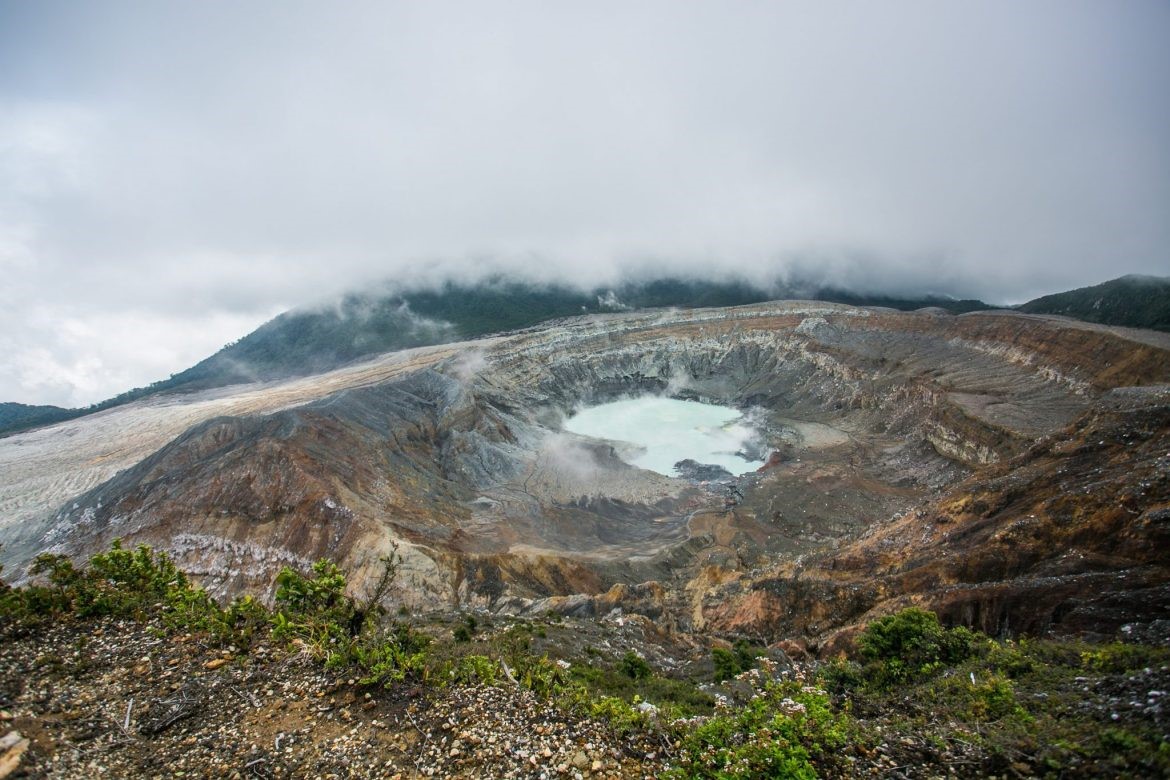 |
Figure 124. The Caliente crater at Poás with a blue crater lake on 28 August 2018. Courtesy of Costa Rica Gobierno del Bicentenario. |
During December phreatic activity was observed at hydrothermal vents on the 19th (four events) and 20th (three events) that ejected water-saturated material up to 30 m above the vent accompanied by strong degassing and steam plumes. On 20 December it was observed that the lake level had dropped by 1 m and the lake was divided into two bodies of water, Boca A and Boca C. There were also changes in the crater lake color. Starting at the beginning of the month, the lake progressively changed from blue to green, especially visible on 8 December (figures 126, 127, and 128).
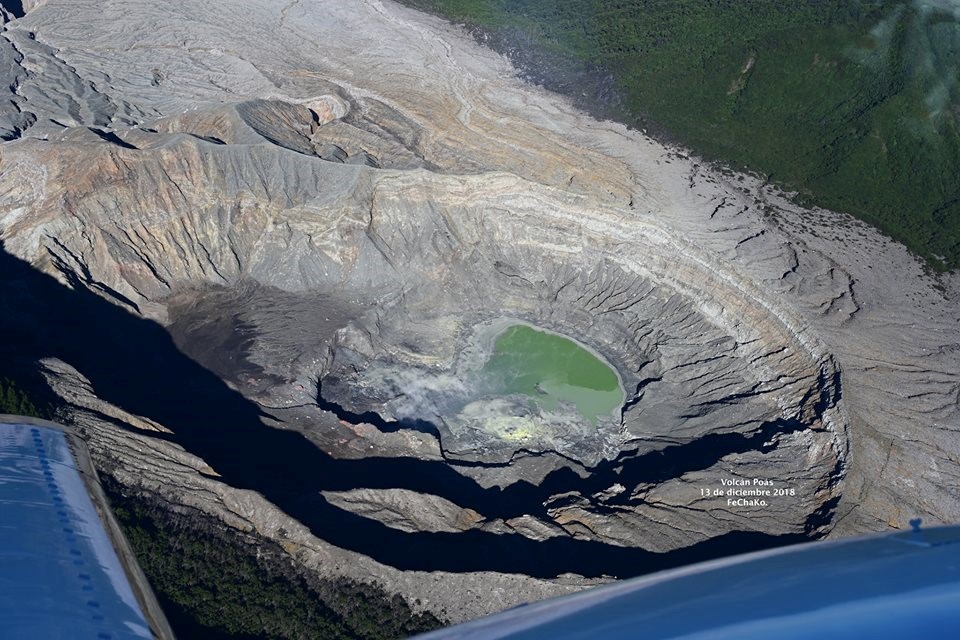 |
Figure 127. A view of the green crater lake with reduced water levels at Poás on 13 December 2018. Photo by Federico Chavarría-Kopper courtesy of OVSICORI-UNA. |
Geological Summary. The broad vegetated edifice of Poás, one of the most active volcanoes of Costa Rica, contains three craters along a N-S line. The frequently visited multi-hued summit crater lakes of the basaltic-to-dacitic volcano are easily accessible by vehicle from the nearby capital city of San José. A N-S-trending fissure cutting the complex stratovolcano extends to the lower N flank, where it has produced the Congo stratovolcano and several lake-filled maars. The southernmost of the two summit crater lakes, Botos, last erupted about 7,500 years ago. The more prominent geothermally heated northern lake, Laguna Caliente, is one of the world's most acidic natural lakes, with a pH of near zero. It has been the site of frequent phreatic and phreatomagmatic eruptions since an eruption was reported in 1828. Eruptions often include geyser-like ejections of crater-lake water.
Information Contacts: Observatorio Vulcanologico Sismologica de Costa Rica-Universidad Nacional (OVSICORI-UNA), Apartado 86-3000, Heredia, Costa Rica (URL: http://www.ovsicori.una.ac.cr/); Sentinel Hub Playground (URL: https://www.sentinel-hub.com/explore/sentinel-playground); Costa Rica Gobierno del Bicentenario, Official Website - Presidency of the Republic of Costa Rica, Zapote, San José, Costa Rica (URL: https://presidencia.go.cr/comunicados/2018/08/29-de-agosto-presidente-alvarado-dara-banderazo-de-reapertura-del-volcan-poas/).


